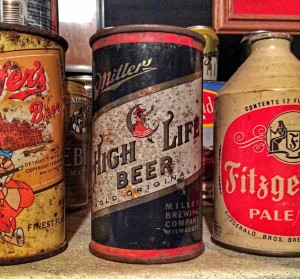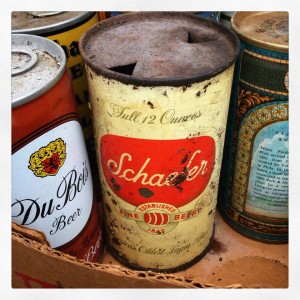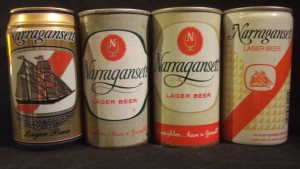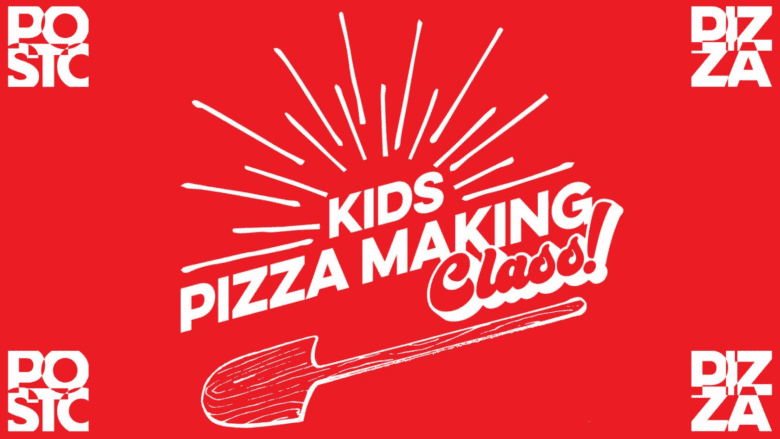Kevin Logan is, quite literally, the man with the cans. Where others see recycling, the East Taunton resident sees artifacts of brewing history. He’s collected around 5,000 cans and beer-related collectibles (or, breweriana), turning his basement into The Beer Can Museum & Hall of Fame. His collection encapsulates beer culture back to the pull tab and beyond, and showcases the range of styles and designs found in the U.S. and abroad. As of now, tours are mostly virtual via the museum’s website and active Instagram account but Logan hopes to change that one day as his can plans expand.
Firstly, why beer cans? What got you interested in them as collector’s items?
 Beer can collecting was a popular hobby in the 70s. Tens of thousands of teens were into it (back then, everyone had a ‘Billy Beer’ can, a JR Ewing can, and an Old Frothingslosh can (the beer with the foam on the bottom!)). I had an older cousin – in college – who showed me his huge 50-can collection while I was at a family reunion in Galveston, Texas in 1978. I was amazed at the variety and the designs on his shelves, and he must’ve seen my jaw drop since he gave me half a dozen Texas cans (one of which was a Lone Star) to start my collection. I tucked those cans into my suitcase and brought them back to New England. The rest is history.
Beer can collecting was a popular hobby in the 70s. Tens of thousands of teens were into it (back then, everyone had a ‘Billy Beer’ can, a JR Ewing can, and an Old Frothingslosh can (the beer with the foam on the bottom!)). I had an older cousin – in college – who showed me his huge 50-can collection while I was at a family reunion in Galveston, Texas in 1978. I was amazed at the variety and the designs on his shelves, and he must’ve seen my jaw drop since he gave me half a dozen Texas cans (one of which was a Lone Star) to start my collection. I tucked those cans into my suitcase and brought them back to New England. The rest is history.
How has the internet changed the way you source cans and share your collection?
In the 70s, collectors shared their lists of ‘trader stock’ (duplicate cans) via snail mail and you would arrange a trade that could take weeks to complete. Now, collectors can acquire cans from eBay and have them on their shelves within days. With all the new craft cans out there now, many collectors are trading not only the cans but the beers themselves to sample. Craft beer aficionados arrange beer trades via social media all the time. I connect with artists who use beer cans in upcycled art (earrings, sculptures, etc.) and while I might give a dozen or so tours of the physical museum in a year, almost 40,000 have virtually visited the collection via our website.
How do you organize and display them? At this point, you might need your own card catalog system (can catalog?).
 Well, I started with an attempt at an alphabetical display, from ABC Beer to Zing, but it’s changed over the years. I have sports-themed displays, grocery store cans, Bock beers, etc. I mix in beer can art throughout the collection, as well as beer taps, interesting promo items, and even a few antique bottles (e.g. a Schlitz bottle, circa 1909, from Boston). Most of the cans on display are bottom opened using a churchkey opener. They tend to look better on the shelves that way.
Well, I started with an attempt at an alphabetical display, from ABC Beer to Zing, but it’s changed over the years. I have sports-themed displays, grocery store cans, Bock beers, etc. I mix in beer can art throughout the collection, as well as beer taps, interesting promo items, and even a few antique bottles (e.g. a Schlitz bottle, circa 1909, from Boston). Most of the cans on display are bottom opened using a churchkey opener. They tend to look better on the shelves that way.
What’s your favorite can, the one you’re most proud of?
1964 Schaefer flat top (no pull tab, had to be opened with churchkey opener) from the NY World’s Fair. Found 2 of them, full and in mint condition, while I was cleaning an elderly woman’s basement in 1980. She didn’t drink, and the beer had been in her basement fridge for 17 years. My older brothers and I bottom-opened the cans, drained and sampled the beer (horrible sludge after all those years) and I still cherish one of those cans today (gave the other to the cousin down in Texas).
What’s the greatest lengths you’ve gone to to get a can?
Well, when traveling for work I always try to acquire new cans. I have bartered for beer can magnets in Tijuana, picked up some South American cans while living for a short time in Antofagasta, Chile and ended up with poison ivy digging for older cans in a dump in Rehoboth, MA. A friend was recently at base camp at Mount Everest and he brought me a can of Everest Beer (‘Beer from the Top of the World’). So many of the cans have interesting stories that go with them. I have a friend currently living in Lesotho who has been acquiring African cans for the museum. We usually receive a couple of boxes every week from around the world. The thrill is still there for me, as museum curator, whenever a box arrives – even if it’s a rusty old PBR can.
How have you seen beer cans change over the years?
 I have a display when you first enter the museum that is a trip through beer can design history, from flat tops to cone tops (like brake fluid cans) to pull tabs (an environmental nightmare and the source of many foot injuries at the beach) to the current stay on tabs. Some newer trends include self-cooling cans, and, locally, the Sam Can for Sam Adams. That can was designed, I might add, after Jim Koch spent a million dollars on research, some of which took place in my museum. I spent a day with a research team from IDEO marketing in Cambridge and they explored the museum and took many pictures of can designs. They borrowed research books from the museum library and while they couldn’t tell me at the time who had hired them, I quickly figured it out as they focused on my Sam Adams breweriana and mentioned they were doing work for a Boston brewer that was considering canning its beer (against the wishes of many of their loyal bottle-loving customers). I was honored to have played a role in the development of their Sam Can.
I have a display when you first enter the museum that is a trip through beer can design history, from flat tops to cone tops (like brake fluid cans) to pull tabs (an environmental nightmare and the source of many foot injuries at the beach) to the current stay on tabs. Some newer trends include self-cooling cans, and, locally, the Sam Can for Sam Adams. That can was designed, I might add, after Jim Koch spent a million dollars on research, some of which took place in my museum. I spent a day with a research team from IDEO marketing in Cambridge and they explored the museum and took many pictures of can designs. They borrowed research books from the museum library and while they couldn’t tell me at the time who had hired them, I quickly figured it out as they focused on my Sam Adams breweriana and mentioned they were doing work for a Boston brewer that was considering canning its beer (against the wishes of many of their loyal bottle-loving customers). I was honored to have played a role in the development of their Sam Can.
Does your interest extend beyond collecting? Do you have a favorite local beer?
I work in publishing by day, here in Boston, so I enjoy finding beer can references in literature (and film). As for local beers, I do like Sam Adams’ Cold Snap.
Can plans going forward? Will you be getting a bigger space? Offering tours?
My dream is to have an actual museum, just off the interstate, maybe on the way to the Cape, where I can move the museum some day, perhaps when I retire. It has evolved into a fantastic collection, if I do say so myself, and it would actually fit in perfectly at the Smithsonian some day!

















